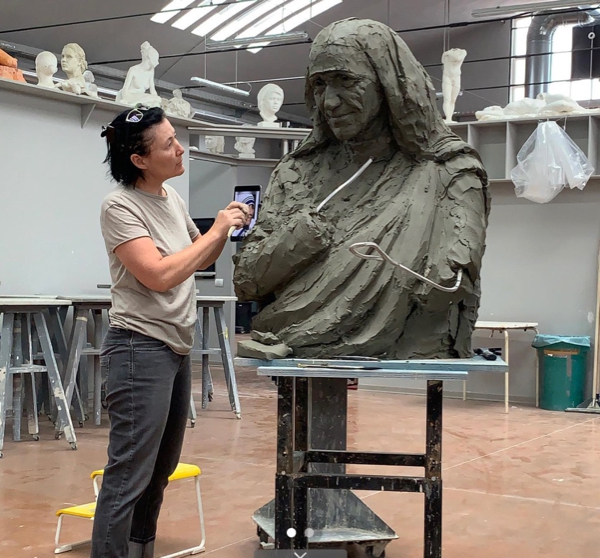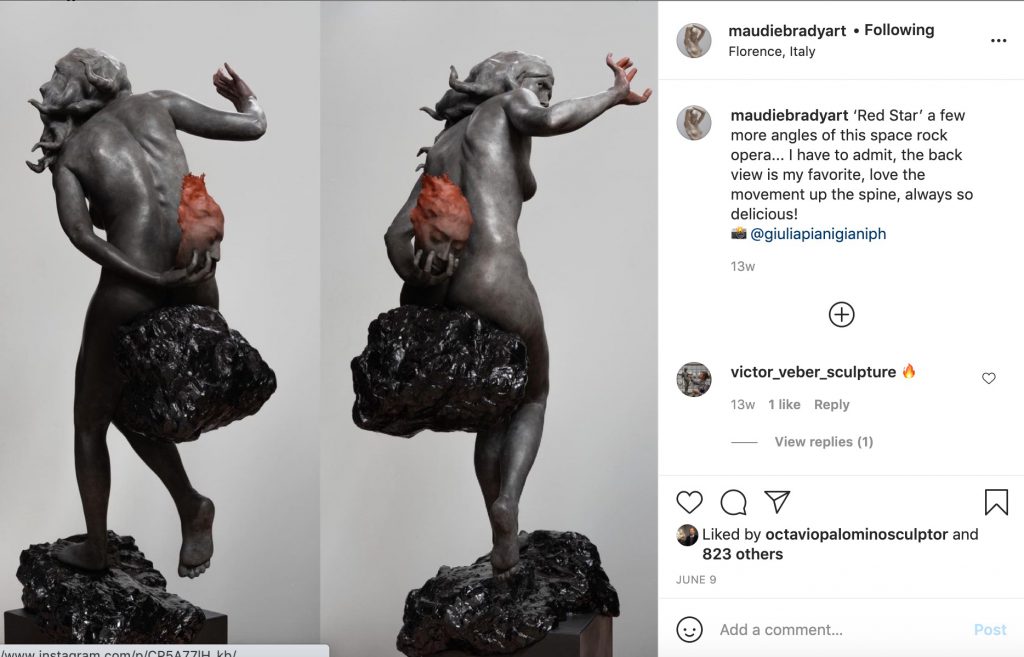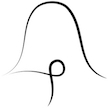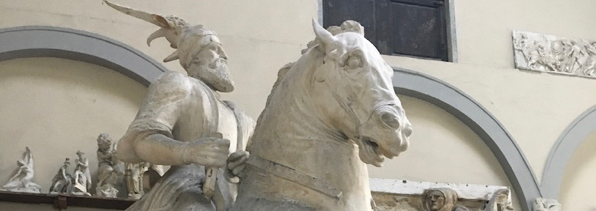The Sacred Art School (Fernando Cidoncha), Maudie Brady, and Raffaello Romanelli
I came to Florence in search of human figure sculptors: people whose work I admire, who inspire me, and who are willing to teach me. One interesting thing I’ve learned is that there are basically two lineages in the sculpture world in Florence. All of the sculptors I’ve met so far were either taught by or taught by students of Jason Arkles or Robert Bodem. Jason was the head of the sculpture department at Charles Cecil Studios, and Robert was the head of the sculpture department at the Florence Academy of Art. The latest three studios I visited fit in with this narrative – but with some interesting variations.
The Sacred Art School lies along the Arno, a bit outside of the city center, secluded in the middle of Parco Delle Cascine. The school occupies the top floor of a villa which is shares with a restaurant and outdoor swimming pool, giving it a sort of relaxed, vacation feel. The mission of the Sacred Art School is to promote “creativity in art and artistic craftsmanship, with a boundless openness to the world of the sacred.” It boasts three departments: painting, gold smithing, and sculpture.
Fernando Cidoncha, head of the sculpture department, greeted me and gave me a tour. His work was all over the sculpture area as he had just arranged it to show to visiting gallery representatives. Fernando was one of the first students at the Sacred Art School when it was founded a decade ago. At the time, Cody Swanson was the sculpture instructor. Cody’s teacher was Robert Bodem, so Fernando belongs in the Florence Academy lineage. However, the interesting thing about Fernando is that he seems to be a pretty self-motivated and self-taught guy. He paints as well as sculpts, and he sought out additional painting instruction at the Russian Academy in Florence as well. The iconographic tradition on the Eastern churches also influences his aesthetic. In my conversation with him, he emphasized the importance of composition and artistic vision (as opposed to merely developing technical facility in representing the human body). A number of the works he had on display were paintings and sculptures that were executed with some visual references but without live models.




My next visit was to Maudie Brady. We met at a coffee shop with tables tucked away in a little courtyard near the Ponte Vecchio. Since it wasn’t at her studio, I don’t actually have any studio shots, but here are a few images from her Instagram feed to give you a sense of her work.


Prior to embarking on her fine art career, Maudie worked in film and television, executing clay modeling for props and costumes in movies such as Pirates of the Caribbean, Star Wars, and the Hobbit. She came to the Florence Academy in order to improve her human figure sculpture skills and ended up staying there and switching careers. She now lives in Florence, teaching at the Academy, and working on commissions.
As I understand it, the main technical difference between the Charles Cecil and the Florence Academy sculpture methods is that the Charles Cecil (Jason Arkles) approach emphasizes what is called sight size, whereas the Florence Academy (Robert Bodem) uses elements of sight size but is also constructive in approach. In other words, Jason looks at the model and records what he sees. Robert looks at the model, thinks about the anatomical construction of the body, and reproduces it. This is an over simplification, but it’s a starting point in thinking about the different approaches. Maudie is a Florence Academy graduate. But, she did not seems very attached to a particular method of approaching human figure sculpture. What she emphasized in our conversation was the importance of having lots of time with live models. Any method of learning human figure clay modeling is going to take a lot of time and repetition for the skills to sink in. Any full time, academic program will include at least 2 years of daily sculpting from life.
One of the things Maudie said was that the Florence Academy approach involves keeping the underlying skeletal structure in mind at every stage of the sculpture process. The advantage of this mindset is that it enables the artist to create a sculpture that expresses the soft-over-hard quality of the human body (as in, soft tissue over bones). It seems to me that if my end goal is to sculpt the human form, this is an excellent method. However, if my end goal is to sculpt other things, this may not be the most useful method. So, once again, the question comes down to, “What do I want to make?”
Which brings me to Raffaelle Romanelli. As the Galleria Romanelli website states, Raffaelle “represent the 5th generation of Romanelli sculptors down the male line.” The studio is in a 16th century de-consecrated church near the old city gates. The showroom is full of works by previous generations of Romanelli, including an enormous equestrian statue.

But, Raffaelle also belongs to the Charles Cecil/Jason Arkles tradition. From what I can tell from the Romanelli website, Raffaelle’s father did not dedicate himself to sculpture until after the death of his predecessor in the studio, and so – although the lineage of blood is there – the lineage of training passes through the Charles Cecil school.
However, Raffaelle, being surrounded by the works of his fathers, takes inspiration from them. His own specialty is portrait sculpture. And, he teaches new generations of student in a program that is structured, academically and that also encourages individual initiative and creativity.

So, that’s the wrap for this week! I’ve met a lot of people making lots of cool things. Here’ one last shot of the studio where I’ve spent the most time and about which I still need to blog: Maestro Arkles in his studio.



It sounds like you’re having a feast of visual and conceptual input. Enjoy!